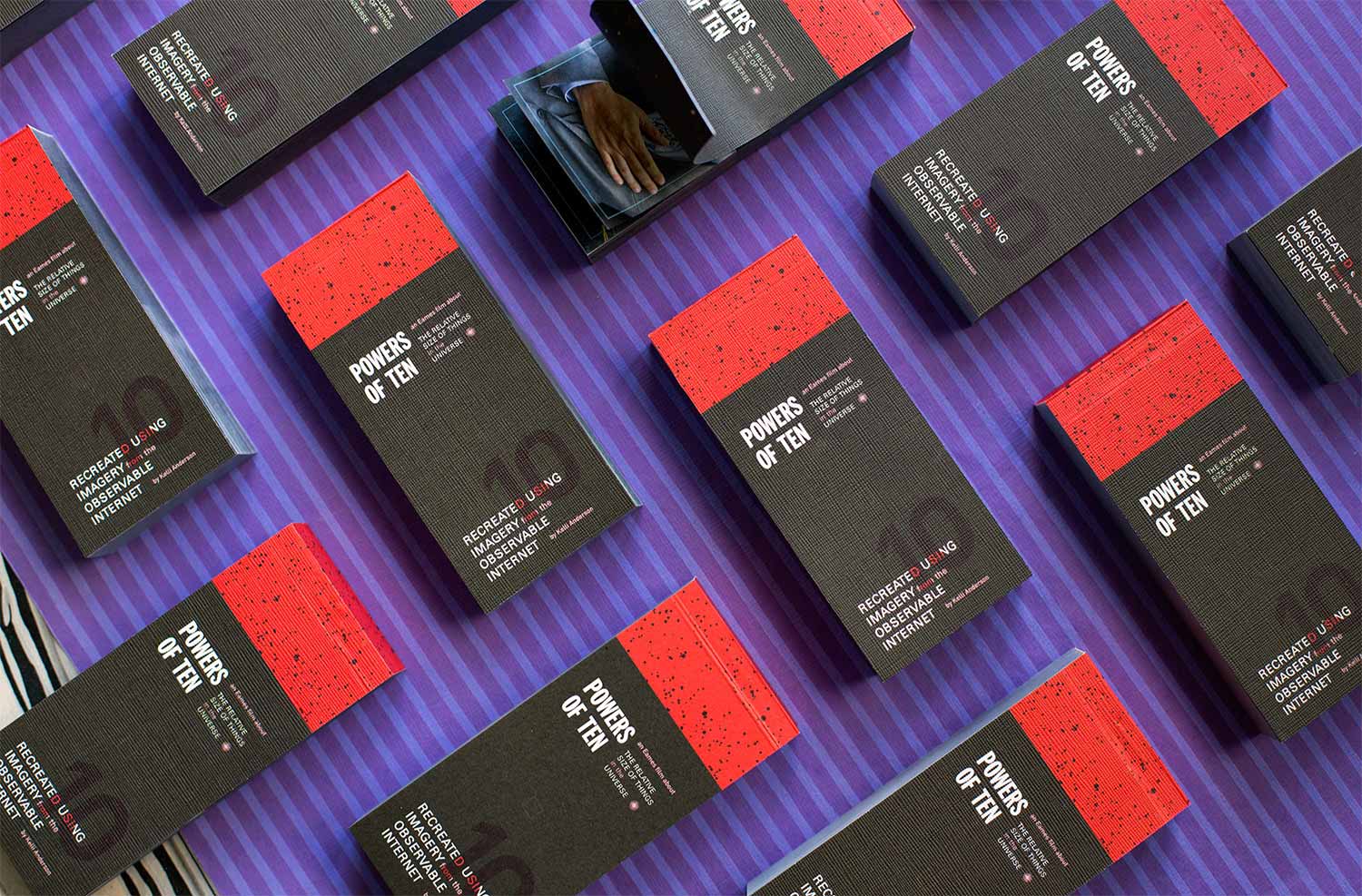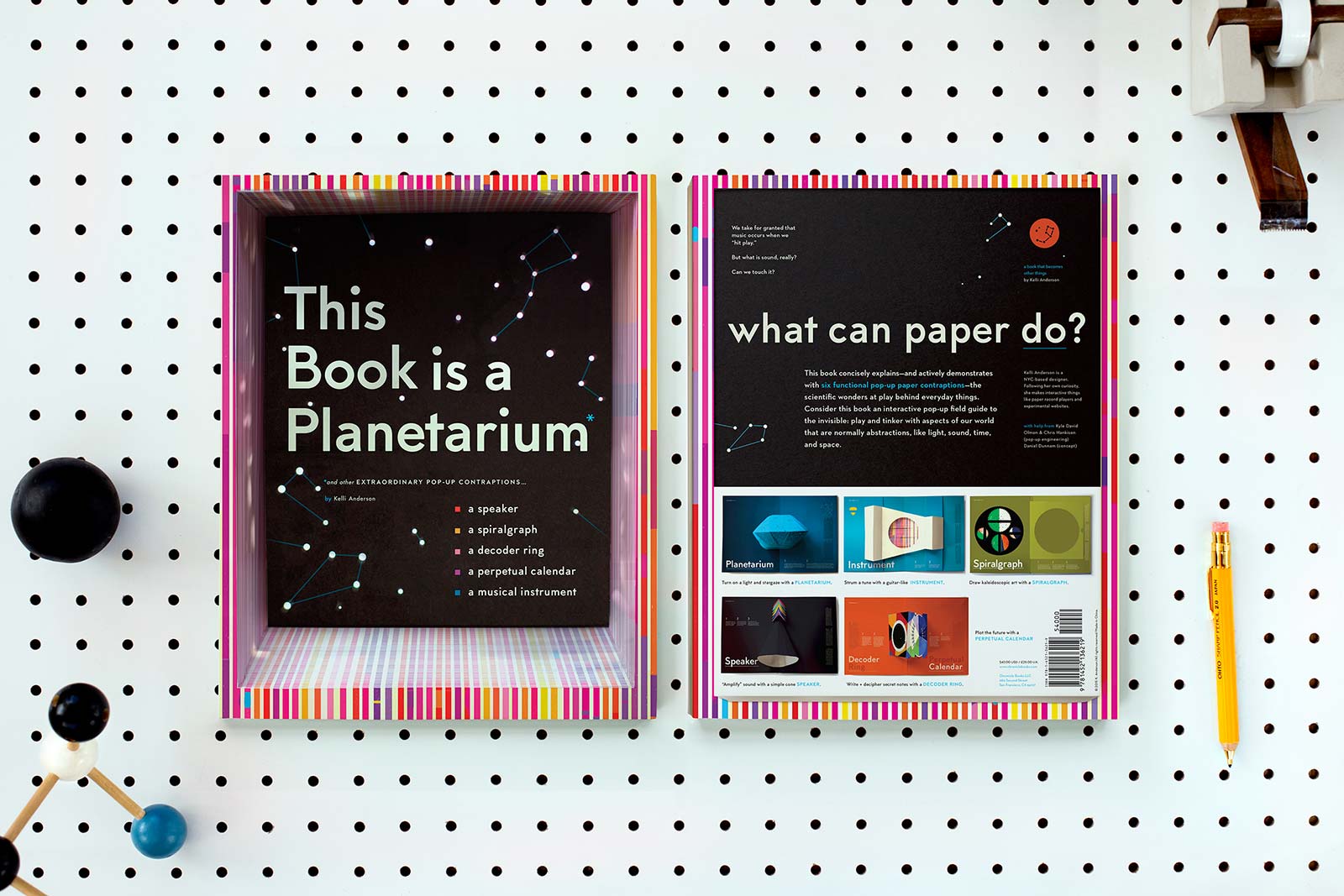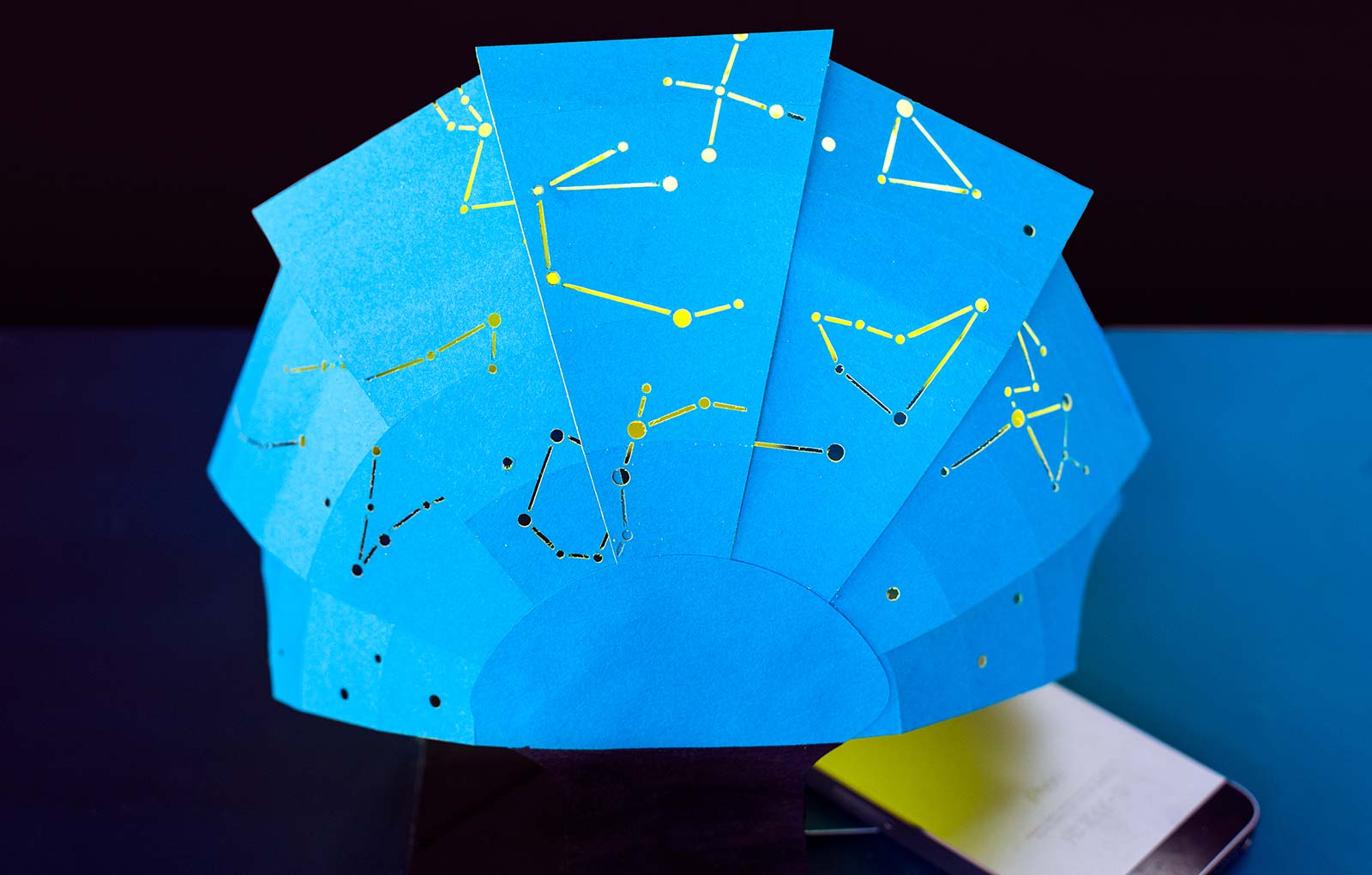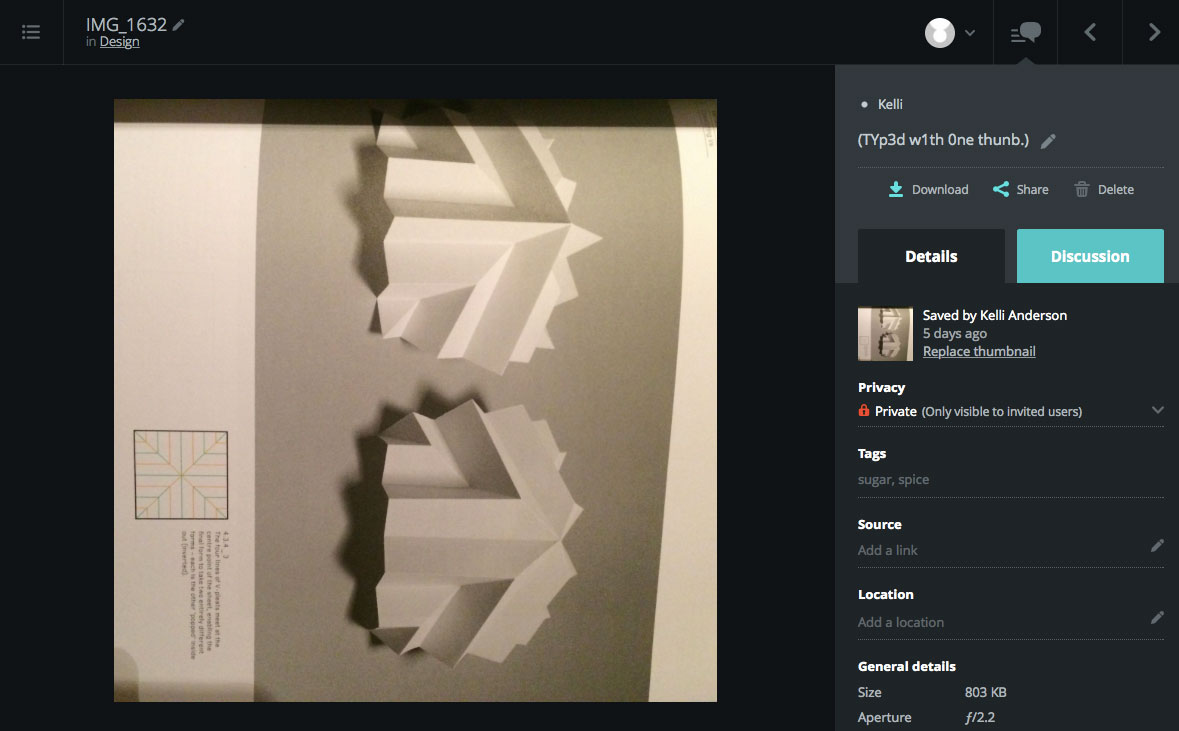How Kelli Anderson gets things done
Known for her inventive paper gadgets and experiments, Brooklyn-based designer Kelli Anderson blurs the line between art and science.
Kelli was recently selected for Adobe’s new Creative Residency program, which gives talented creatives the opportunity to focus on personal projects for an entire year. Her upcoming book, This Book is a Planetarium, further explores the relationship of art and science with a series of pop-up paper tools that defy expectations, including a real working planetarium, a musical instrument complete with strings, and a speaker that amplifies sound.
We caught up with her to find out more about her process and inspiration.
What inspires you?
I think that questions inspire me most. Especially the ones that seem testable. I get excited when I have some kind of inkling about the world that I can wonder about in action by trying it out. The questions I tend to have range from “would seafoam-green go well with that?” to “is paper strong enough to hold strings taut enough to make a musical instrument?”
My favorite projects have begun with hunches like these. Completing them usually entails some meandering process of testing, asking more questions, and looking for signs of an answer. And repeat.
Video: Adobe profiles Kelli Anderson, recipient of their Creative Residency program
“…questions inspire me most. Especially the ones that seem testable.”
Your work appears to be constantly evolving. How do you define what you do?
Yeah, my work is all over the place! Just this past week, I was struggling with code, glueing-together paper sculpture illustrations, writing an essay, and designing a book cover. So I use a lot of different materials, but my favorite things all tend to do the same thing at least. So it all makes sense… right?
The work I like best, my own and others’, finds possibility hiding in plain view. I like working with materials that we take for granted: easy-to-overlook, non-exotic stuff like paper or Google Image search results. There are ways we can manipulate little pieces of everyday life, to make them behave differently. The effect can be quite surreal and transformative in a very humble way.
Is there a particular project you’re most excited about right now?
I’m in the middle of a creative residency with Adobe, so I get to work on 100% self-initiated projects this year. That sounds magical — and is! — but it also prevents me from going on autopilot. I can’t blame bad work on unfortunate client decisions or out-of-touch art directors.

Powers of Ten, a flip book about scale
“There are ways we can manipulate little pieces of everyday life, to make them behave differently. The effect can be quite surreal and transformative in a very humble way.”
One thing I’ve made with this new creative responsibility-to-myself: I’m really excited about this flipbook I just completed. It recreates part of the Eames’ Powers of Ten using only found images from the Internet. I was wondering if the Internet was big enough yet to give us any animation frame we’d ever need. The answer is yes! With a caveat, which you can read about in nerdy detail. I made a digital version of the flipbook where your mouse acts like a thumb here. I think the digital version may be even more fun than the paper version — the first time that has ever happened, ever?
I’m also about to release my first mass-published, gonna-be-everywhere-on-earth-sans-Antarctica book. It is an experimental pop-up book of devices that you can actually use!

This Book is a Planetarium, published by Chronicle Books
A few years ago, I made a paper record player wedding invitation for my awesome music-obsessed friends, Mike + Karen. We all thought it was REALLY COOL but couldn’t really say why it was so magical. The truth of the matter is: a lot of everyday phenomena, like sound, works in a manner that is at odds with our firsthand experience of them. When you’re just tapping play to hear a song, it’s easy to forget that sound is touch at a distance. That sound is what happens when air molecules are disturbed in a wave and that wave travels into your inner ear, hits a flap of skin, and then you hear “The Cure!!!!” The paper record player is a device for connecting this truth of how-things-really-work to firsthand experience because it lets users feel out the physicality of the vibrations of a song while they hear it.
I’ve taken that unexpected talent of lo-fi, of reducing tools to their barest paper minimums, and made a whole book of things that demonstrate invisible forces at play in the world. Well, 6 things. It is a 5-page book that has 6 legit magical things and it has taken me 2 years. They all work in this charmingly barely functional way. The book is called This Book is a Planetarium and the first spread is, indeed, an accurate pop-up planetarium you can use with an iPhone or flashlight.

A real working planetarium from This Book is a Planetarium
And excitingly: the creative residency is allowing me to make even more stuff. I have a pop-up large format camera in the works that I’m really excited about! It makes these highly atmospheric pinhole images. And then you can close it, like a book, and it fits under your arm. I wish everything could be collapsible and fit in a book!
What does your process look like as a designer?
Depends on the project — client work, editorial work, and personal projects all tend to go down really differently.
One quirky process-thing I do — which may be useful to others, who knows? — I have to see things in context or I don’t feel like I can make decisions. If I’m designing a menu for a restaurant, for example, I really don’t feel comfortable unless I can photograph the actual paper stock on an actual table in the actual light. I then take a photo of that actual actuality into Photoshop and start designing on top of it.
That may sound okay and normal, but I also do this with images I’m making for Instagram. I mock up the image surrounded by Instagraminess. Cuz all of that white and gray affects things, dammit!
Video: Talking While Female, a stop-motion animation created for NPR
How does Dropmark fit into your workflow?
I collect inspiration using Dropmark. I’ll email work idea notes to my #design Dropmark, i.e. Yoko-esque instructions like “experiment with making typography from Neverwet”. I also photograph materials in the wild and also screenshot the cool work I see online. I squirrel this stuff away for a rainy, artists-blocky kind of day.
For clients where we are collaborating on a long term project, I’ve found it immensely helpful to dump all of the work we’ve done together into a Dropmark. Because sometimes the solution for a wallpaper design solution lies in an earlier discarded tote bag comp. Having everything together in one big visual waterfall helps make connections easier and reaching solutions more obvious. Sometimes clients see solutions through these juxtapositions that hadn’t occurred to me! It really does help everyone involved in a project feel more proactive and more organized. That keeps us from having conversations like “Remember that t-shirt you did? It was kind of blue…” which lead to hours of inbox-searching.
I have very little organizational insight. Dropmark is one of my few stay-organized superpowers.

Kelli uses Dropmark to catalog design resources, including what’s on her bookshelf
“I have very little organizational insight. Dropmark is one of my few stay-organized superpowers.”
What’s the most interesting thing you’ve Dropmarked recently?
I tend to be an out-of-sign-out-of-mind person, so figuring out how to bring inspiration into visibility — while keeping my apartment uncluttered — is an ongoing challenge. Lately, I’ve been leafing through books on my shelf and photographing the stuff I want closer at hand. When I’m trying to figure out how to fold paper for a pattern, I want to remember that Folding Patterns for Designers is a really good resource. I’m using Dropmark as a visual aid to remember that this book is on my shelf. I’m doing this with all of my favorite design books.
For more on Kelli Anderson visit kellianderson.com and follow @kellianderson on Twitter.
